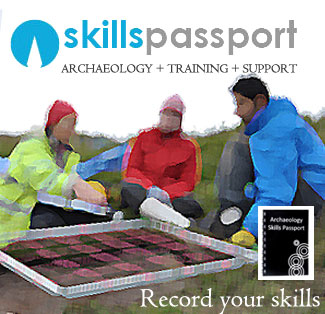Essentially this is the creation of spreadsheets or better still, relational database entries for all the paper records (context, finds, samples etc), with indexed photographs and scanned or digitised plans. Survey data is also checked for consistency – The object is to create a digital dataset that is easily accessible and transferable between specialists and disciplines. The Primary record still remains the paper record (though more digital data is being collected than ever) and properly packed and listed finds, samples. Each box should have a list of what it contains.
PRINCIPLE: Produce a clear and organised site archive, checked in the field and cross referenced between all records
- Novice – Is able to input data into a prepared spreadsheet or database.
- Competent – Able to input data into a prepared spreadsheet or database and flag possible issues, errors or inconsistent cross referencing
- Proficient – Will input data into a prepared spreadsheet or database and flag possible errors or inconsistent cross referencing and then collate these issues in order to rectify them.
Professional tips:
A spreadsheet is not the same as a database.
If you can’t read a word – don’t guess it. put square brackets around it so people know you could not understand it.
Take care when inputting numbers. It can be easy to make mistakes. Concentrate – distractions cause errors.
In effect, this is the creation of lists and then creating lists of lists. Boxes of finds will be accompanied by a list of what is in the box.
Open Office ( Free software that includes databases and spreadsheets)
The Standard and Guide to Best Practice in Archaeological Archiving in Europe


